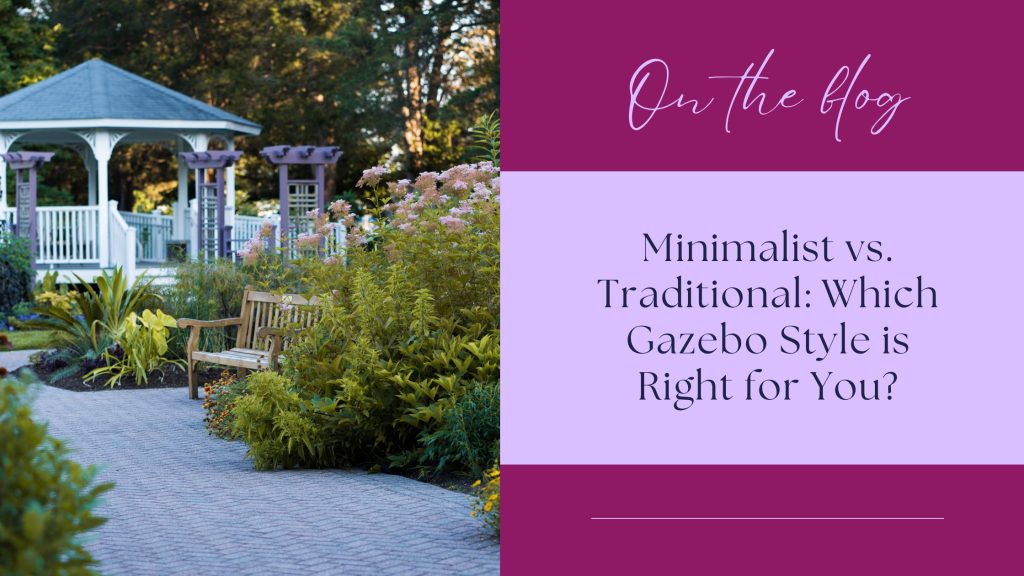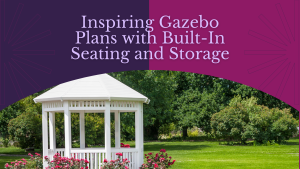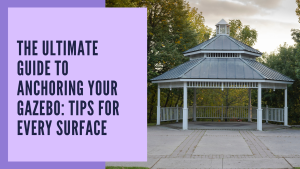Choosing Between Minimalist and Traditional Gazebo Styles
When it comes to designing your outdoor space, one of the most important decisions you’ll make is choosing the perfect gazebo. Whether you’re looking to create a peaceful retreat or add elegance to your backyard, gazebo woodworking plans offer numerous possibilities. Two of the most popular styles you’ll encounter are the minimalist and traditional gazebos. While both have their charm, understanding their differences can help you select the ideal design for your space and preferences.
In this article, we’ll explore the key differences between minimalist and traditional gazebos, focusing on their aesthetic appeal, functionality, and practicality. Plus, we’ll offer tips on how to make your decision easier, from gazebo design plans to DIY tips for creating a homemade wooden gazebo.
Understanding the Key Differences
The first step in choosing between minimalist and traditional gazebo styles is to understand the core differences. While both styles are functional, they differ significantly in design philosophy and execution.
- Minimalist Gazebos focus on clean lines, simplicity, and functionality. These structures tend to use fewer decorative elements and are often built with a more modern aesthetic in mind. The emphasis is on open spaces, light, and a subtle integration into the environment.
- Traditional Gazebos, on the other hand, draw on classic architectural styles. These structures are often more ornate, featuring intricate details such as lattice work, decorative columns, and sweeping roofs. They evoke a sense of nostalgia and charm, often becoming the centerpiece of a garden or backyard.
The Aesthetic Appeal of Minimalist Gazebos
Minimalist gazebos appeal to those who prefer sleek, contemporary designs. By emphasizing simplicity, these structures can blend seamlessly into modern landscapes and provide an unobtrusive space for relaxation. The design focuses on functionality and clean aesthetics rather than ornamental features.
When designing a minimalist gazebo, you’ll likely choose materials like metal, glass, or smooth, natural wood finishes. The clean lines and open spaces invite a sense of calm and tranquility, making minimalist gazebos perfect for small, modern outdoor spaces or areas where you want to create an unobstructed view of the surroundings.
If you’re interested in a DIY approach, basic gazebo plans are widely available for minimalist designs, giving you the tools to build a gazebo from scratch or adapt an existing plan to fit your needs. Since minimalist gazebos usually require fewer materials, they can also be a more affordable choice for those on a budget, especially when opting for a DIY gazebo cheap solution.
The Timeless Charm of Traditional Gazebos
Traditional gazebos offer a timeless charm that can transform any garden or yard into an inviting and picturesque space. These structures often evoke a sense of nostalgia and classic beauty, with their intricate details and ornamental features. Whether you’re designing a homemade wooden gazebo or looking to incorporate other materials, traditional gazebos provide a sense of elegance that is hard to match.
The hallmark of a traditional gazebo is its detailed craftsmanship. Expect to see decorative spindles, a beautifully pitched roof, and curved lines. These elements can take some time to create, but the result is a structure that exudes grace and sophistication. A gazebo design plan for a traditional style will likely include multiple layers of woodwork and potentially a more complex layout, which can be customized with railings, lattice panels, or flower boxes.
For those with larger yards or gardens, a traditional gazebo provides a statement piece that offers both beauty and functionality. These gazebos can serve as the perfect setting for outdoor gatherings, tea parties, or just a place to unwind while enjoying your garden’s natural beauty.
Functionality and Practical Considerations
While aesthetics are an important part of choosing a gazebo, it’s essential to consider the structure’s functionality as well. Both minimalist and traditional gazebos are versatile, but there are practical differences to keep in mind.
- Minimalist Gazebos are designed to be flexible and adaptable. They often feature open layouts, which means there’s little obstruction to airflow and views. This style may be better suited to spaces where you want a more subtle, unobtrusive structure. Minimalist gazebos are ideal for modern outdoor living areas and smaller backyards, where the goal is to enhance the space without overwhelming it.
- Traditional Gazebos, with their more intricate designs, offer a greater sense of enclosure and can provide more privacy or shade. These gazebos are perfect for larger properties or those with more expansive gardens, where they can act as a focal point. If you plan to use your gazebo for hosting gatherings or events, the traditional style’s enclosed walls and ornamental features may provide the atmosphere you’re seeking.
When it comes to how to build a gazebo out of wood, both styles are achievable with the right gazebo woodworking plans. Traditional designs, however, may require more intricate skills due to the added decorative elements and materials involved.
Which Gazebo Style Best Fits Your Space?
Choosing between minimalist and traditional gazebo styles largely depends on the space available and the atmosphere you wish to create. Here’s a breakdown to help you decide:
- Minimalist Gazebo: Ideal for modern homes or smaller outdoor spaces. If you appreciate simplicity and clean design, a minimalist structure will seamlessly blend into your environment without overwhelming the space.
- Traditional Gazebo: Perfect for larger gardens or outdoor areas that require a more majestic and ornamental focal point. If you enjoy detailed craftsmanship and want a gazebo that exudes charm and character, a traditional design is an excellent choice.
When selecting a basic gazebo plan or a more complex design, think about the space’s size, the ambiance you want to cultivate, and how the gazebo will function. For example, if you want a quiet retreat, a minimalist structure might be the way to go. If you want to host family gatherings or enjoy long evenings under a beautifully crafted roof, a traditional gazebo will provide a more suitable environment.
Making the Right Choice for Your Outdoor Area
Ultimately, choosing between minimalist and traditional gazebo styles comes down to your personal taste and the practical needs of your outdoor space. Whether you’re looking to build a gazebo from scratch using simple materials or seeking to create a statement piece with intricate details, both styles offer unique advantages.
Consider the overall style of your home and garden, the purpose of the gazebo, and your budget when making your decision. If you’re keen on a DIY approach, gazebo woodworking plans can guide you through the process, helping you create either a minimalist or traditional gazebo that will enhance your outdoor area for years to come.In the end, whether you choose a minimalist gazebo or a traditional design, both will provide a wonderful outdoor retreat. It’s all about what feels right for you and your space.






